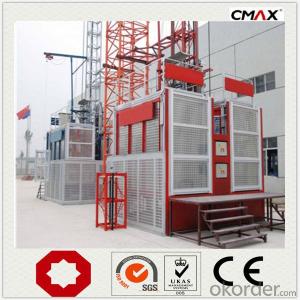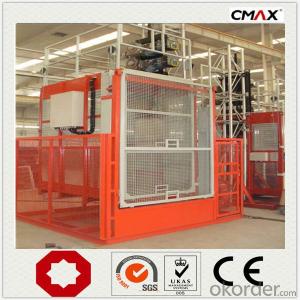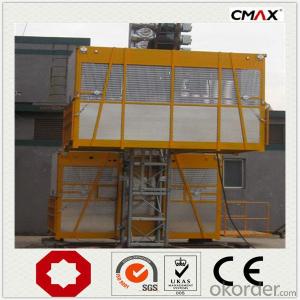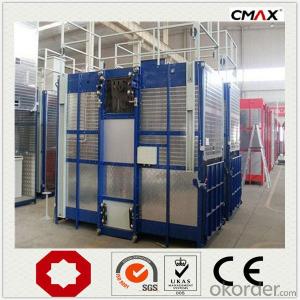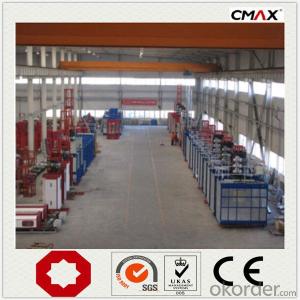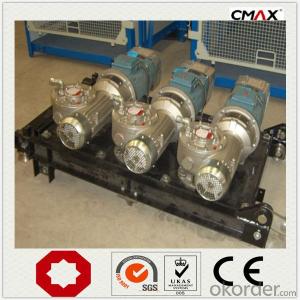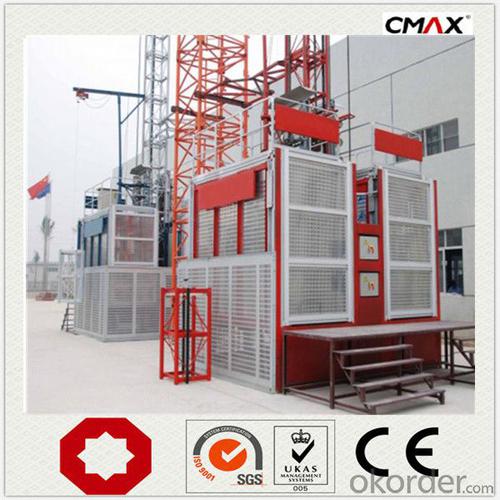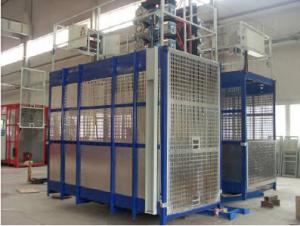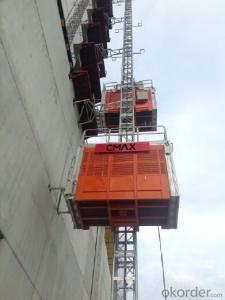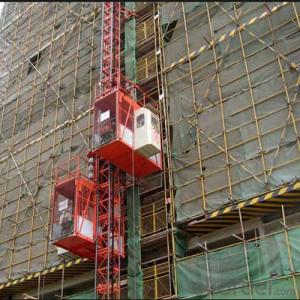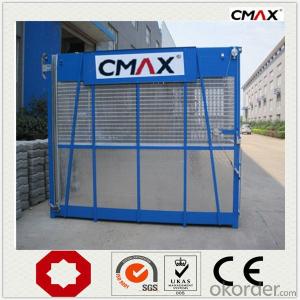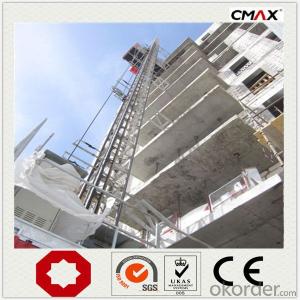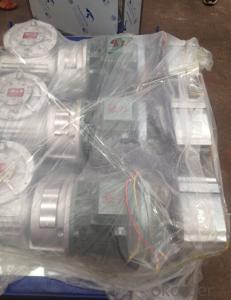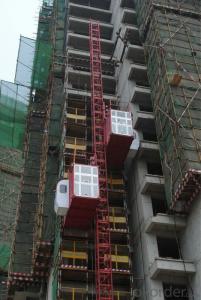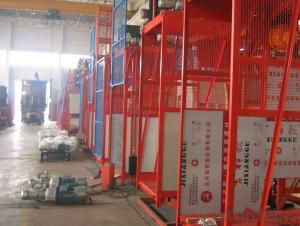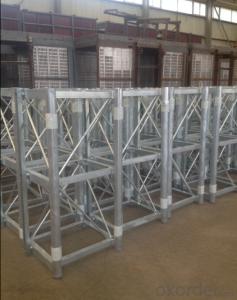Buidling Hoist High Welding and Painting Quality
- Loading Port:
- China main port
- Payment Terms:
- TT OR LC
- Min Order Qty:
- 1 unit
- Supply Capability:
- 30 unit/month
OKorder Service Pledge
OKorder Financial Service
You Might Also Like
Specification
Building Hoist Description
Condition: New
Application: Construction
Payload(kg):1600
Lifting Speed(m/min):0~60
Motor Power(kw): 3*15
Safety Device: SAJ30-1.4
Cage: Single
Counterweight: No
Certification: CE,ISO
Place of Origin: China(Mainland)
Model Number: Type:SC160
Packaging & Delivery of Building Hoist
Packaging Detail: Nude package
Delivery Detail: 25-30days
Building Hoist Images

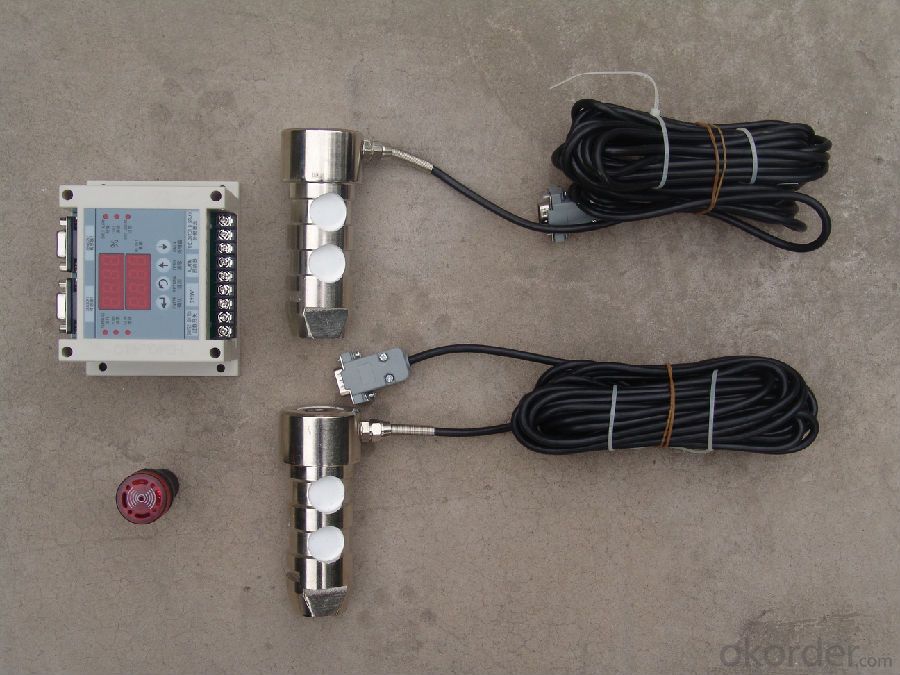
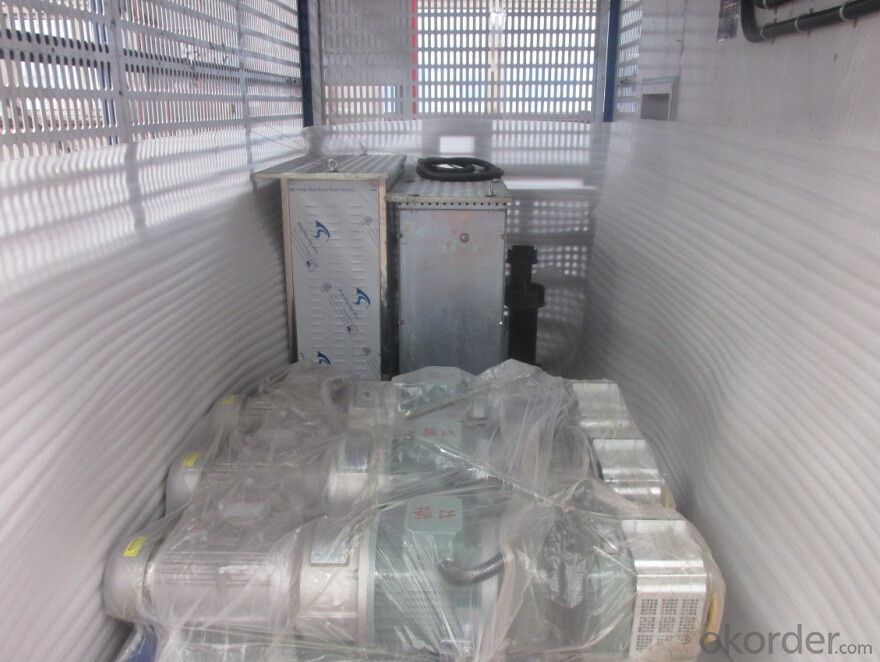
Building Hoist Specifiction
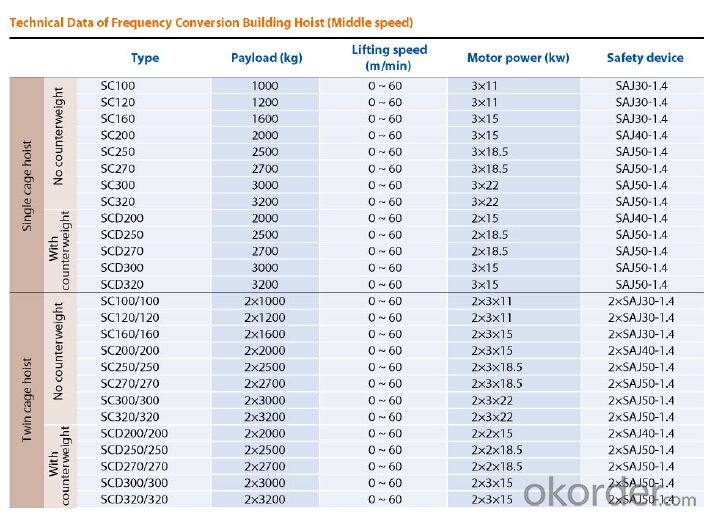
FAQ of Building Hoist
Q: What is the building hoist main purpose?
A: Building hoist equipped with double or single cabin to transport the materials and labors up and down. It's the ideal
construction equipment for vertical transportation in the field of construction.
Q: What is the main structure of building hoist?
A: The P/M construction hoist mainly contains metal structure, driving system, electrical control system, cable guide &
protection system, electrical top crane and safety device.
Q: What is the meaning of the building hoist’s code?
A: Take SC200/200 for example: “SC” stands for rack and pinion hoist, “200/200” stands for double cage and capacity
is 2 tons per cage. “SC200” stands for single cage and capacity is 2 tons.
- Q: Is it possible to utilize a building hoist for the purpose of lifting heavy equipment or machinery?
- <p>Yes, a building hoist can be used for lifting heavy equipment or machinery, provided it has the necessary capacity and safety features. These hoists are designed to handle substantial loads and are commonly used in construction for moving materials and equipment. However, it's crucial to ensure that the hoist is rated for the weight of the equipment, and all safety protocols are followed to prevent accidents. Regular maintenance and inspection are also essential to ensure the hoist's reliability and safety during heavy lifting operations.</p>
- Q: How does the driver of the construction elevator do the search for a sudden power failure
- When the elevator in the operation of the midway stop due to power outages or other reasons, the manual can be decreased, the end of a motor brake electromagnet manual release slowly shake handshandle pull outward, slowly slide down the ladder cage, ladder cage fall shall not exceed the rated speed, manually drop must be conducted by professional maintenance personnel.
- Q: This question asks for a description of the process of operating a building hoist using a remote control system.
- <p>To use a remote control system for a building hoist, first ensure that the hoist is properly installed and inspected for safety. Turn on the hoist's power supply and ensure the remote control is synced with the hoist. Familiarize yourself with the control panel, which typically includes buttons for up, down, stop, and emergency stop. Operate the hoist by pressing the up or down buttons to lift or lower the load. Always monitor the load's movement and communicate with workers on site. Use the stop button to halt the hoist if needed, and the emergency stop button in case of an immediate hazard. Regularly check the hoist's operation and maintain the remote control system to ensure smooth and safe operation.</p>
- Q: Can a building hoist be utilized to lift more than one object simultaneously?
- <p>Yes, a building hoist can be used to lift multiple objects at once, provided that the combined weight of the objects does not exceed the hoist's maximum load capacity. This is often done by securing all objects to a single lifting point or using a pallet or platform to hold the objects together. It's crucial to ensure that the hoist is rated for the total weight and that the objects are evenly distributed to maintain balance during lifting. Always follow safety guidelines and manufacturer's instructions to prevent accidents.</p>
- Q: This question asks for the method to determine the maximum weight a building hoist can lift.
- <p>The lifting capacity of a building hoist is calculated by considering several factors including the hoist's motor power, the strength of the hoist's construction materials, and the safety factor. The manufacturer usually provides the maximum lifting capacity based on these factors. To calculate it manually, you would need to know the motor's lifting force, the efficiency of the hoist's mechanical system, and apply a safety factor to ensure the hoist operates within safe limits. It's important to follow the manufacturer's guidelines and never exceed the specified lifting capacity to prevent accidents and ensure the hoist's longevity.</p>
- Q: Can a building hoist experience failure due to mechanical problems or the natural aging process?
- <p>Yes, a building hoist can malfunction due to mechanical issues or wear and tear. Mechanical problems can arise from various factors such as poor maintenance, overloading, or manufacturing defects. Wear and tear, which is the gradual deterioration of a machine's parts over time, can also lead to malfunctions. Regular inspections and maintenance are crucial to identify and rectify these issues, ensuring the safety and efficiency of the hoist operation.</p>
- Q: Elevator installation approach, need to give the total package (inspect) what data, come a master to answer the detail point
- Supplement: Component members: project manager, safety personnel, inspectors, field director, technical director, foreman, elevator operation (mechanical, electrical installation and maintenance) welders, electricians, scaffolder, etc. The subcontract unit project manager shall have a certificate of construction, and special work shall be given the special work certificate. If the special work certificate is outside the province and province, the construction committee of the construction site should be put on the record.
- Q: What are the primary materials that are commonly utilized in the construction of hoists?
- <p>Hoists are typically constructed using a combination of metals and synthetic materials for strength and durability. Steel, particularly alloy steel, is a common choice due to its high tensile strength and resistance to wear. Aluminum is also used for its lightweight properties, especially in mobile hoists. Synthetic materials such as nylon or polyester are used for hoist ropes and cables due to their resistance to abrasion and corrosion. Additionally, hoists may incorporate components made from brass, bronze, or other metals for specific parts that require low friction or high resistance to corrosion.</p>
- Q: What types of materials can be transported using a building hoist?
- <p>A building hoist can lift a variety of materials, including construction supplies such as bricks, cement, sand, and gravel. It can also transport larger items like steel beams, prefabricated concrete elements, and heavy machinery. Additionally, it is used to move tools, equipment, and sometimes personnel within the construction site. The specific materials that can be lifted depend on the hoist's capacity and the safety regulations in place. It's crucial to ensure that the load does not exceed the hoist's weight limit to maintain safety standards.</p>
- Q: This question asks for a guide on how to properly and effectively install lifting equipment to ensure safety and efficiency.
- <p>To install lifting equipment safely and efficiently, follow these steps: 1. Ensure the equipment is suitable for the load and environment. 2. Check all safety features and documentation. 3. Position the equipment on a stable, level surface. 4. Follow the manufacturer's installation guide precisely. 5. Conduct a thorough inspection before operation. 6. Train operators on safe usage. 7. Regularly maintain and inspect the equipment. Remember, safety is paramount, and adherence to guidelines is crucial to prevent accidents and ensure efficient operation.</p>
Send your message to us
Buidling Hoist High Welding and Painting Quality
- Loading Port:
- China main port
- Payment Terms:
- TT OR LC
- Min Order Qty:
- 1 unit
- Supply Capability:
- 30 unit/month
OKorder Service Pledge
OKorder Financial Service
Similar products
Hot products
Hot Searches
Related keywords
